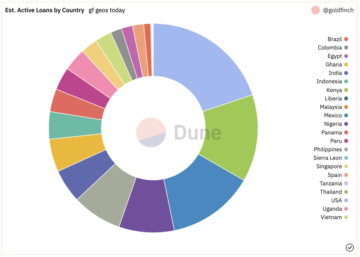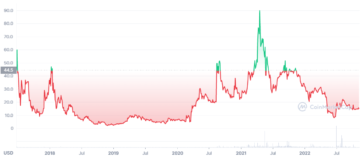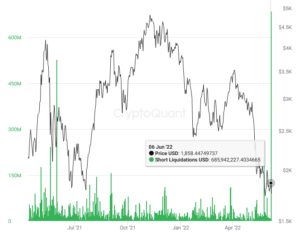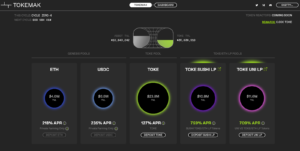
Hashflow, a decentralized exchange offering protection from MEV, has launched on Ethereum’s leading Layer 2, Arbitrum.
The rise of decentralized finance brought with it the unsavory practice of Maximal Extractable Value (MEV). MEV is when miners and other validators manipulate the order of transactions in a network’s blockchain to extract profits.
As much as $25M worth of MEV has been extracted from the Ethereum network in the past 30 days, bringing the all-time total to $592.2M, according to the MEV-focused research team Flashbots.
Market Makers
Hashflow launched to Arbitrum on Feb. 17. The protocol previously completed its private alpha launch on Ethereum in late April 2021, before opening up to the public in August. Hashflow also launched on rival Layer 2 scaling solution Polygon last month.
Hashflow is a novel decentralized exchange that pays professional market makers to ensure its liquidity. Hashflow users can provide liquidity to the protocol to earn fees, which are then split with the protocol’s market makers.
The protocol also claims to offer full protection against MEV from front-running and sandwich attacks, and zero slippage.
Founder Varun Vruddhula described the protocol as an “un-automated market maker” during an April 2021 interview with CoinDesk. “They have the choice to accept funds from lazy LPs, and they all get to split the yield based on the equity ownership of the pool.”
The exchange has processed more than $104.6M worth of trades during the past seven days from an average daily user base of 101 traders, according to Dune Analytics. Hashflow’s most popular pairings are ETH-WBTC, USDC-USDT, and DAI-USDT.
Hashflow’s Arbitrum deployment currently supports trades between popular stablecoins Tether (USDT) and USD Coin (USDC), and AETH — Ethereum that has been bridged onto the Arbitrum network.
MEV is an unresolved challenge facing decentralized blockchain technologies. MEV profits are shared between the miners validating transactions on a network and “searchers” — developers that create and run complex algorithms to detect profitable MEV opportunities. The official Ethereum website describes searchers as using bots to automatically submit the transactions to the network, offering to pay significant fees to miners to incentivize the execution of their transactions.
‘Slippage Tolerance’
DEX arbitrage is the dominant source of MEV, representing 99.4% of MEV profits according to Flashbots. Roughly 64% of MEV profits have been extracted from Uniswap v2, followed by Balancer v1 with 21.2%, and Uniswap v3 with 13.7%. More than 36% of gross profits from MEV extraction have been paid to miners, meaning searchers have profited by roughly $378M since December 2019.
MEV primarily exploits the “slippage tolerance” associated with trades executed on decentralized exchanges. Slippage describes the difference between the price quoted by an exchange prior to a trade being executed, and the price at which a trade is finalized.
Traders that use decentralized exchanges designate their preferred slippage tolerance for all transactions, with Uniswap and Sushiswap recommending a slippage ratio of up to 0.5% by default.
Validated
If the slippage ratio is set too low, the trade may fail as a result of fluctuations in asset prices between when the order is made and when the transaction is validated. But if the ratio is too large, bots searching for MEV opportunities will offer rewards to miners in exchange for reordering transactions to extract the maximum slippage possible via “front-running” and “sandwich” attacks.
DeFi Llama estimates that $1.1B is currently locked in Arbitrum-based DEXes that do not offer MEV-protection, equal to nearly one-third of the combined total value locked (TVL) in Arbitrum according to L2beat.
- 2019
- 2021
- According
- algorithms
- All
- All Transactions
- Alpha
- April
- arbitrage
- asset
- Attacks
- AUGUST
- average
- balancer
- before
- being
- blockchain
- bots
- challenge
- claims
- Coin
- Coindesk
- complex
- create
- decentralized
- Decentralized Exchange
- Decentralized Finance
- deployment
- developers
- Dex
- DEXes
- during
- equity
- ethereum
- ethereum network
- exchange
- Exchanges
- execution
- extraction
- facing
- Fees
- finance
- full
- funds
- HTTPS
- incentivize
- IT
- large
- launch
- Layer 2
- leading
- Liquidity
- locked
- LPs
- Manipulation
- Market
- market makers
- maximum
- meaning
- Miners
- more
- most
- Most Popular
- network
- offer
- offering
- official
- opening
- opportunities
- order
- Other
- pairings
- Pay
- Polygon
- pool
- Popular
- popular stablecoins
- possible
- price
- private
- professional
- profitable
- profits
- protection
- protocol
- provide
- public
- research
- Rewards
- Rival
- Run
- scaling
- set
- shared
- significant
- slippage
- split
- Stablecoins
- Supports
- sushiswap
- team
- Technologies
- Tether
- Tether (USDT)
- tolerance
- trade
- Traders
- trades
- transaction
- Transactions
- TVL
- Uniswap
- Uniswap V2
- USD
- USD Coin
- users
- value
- Website
- worth
- Yield
- zero









